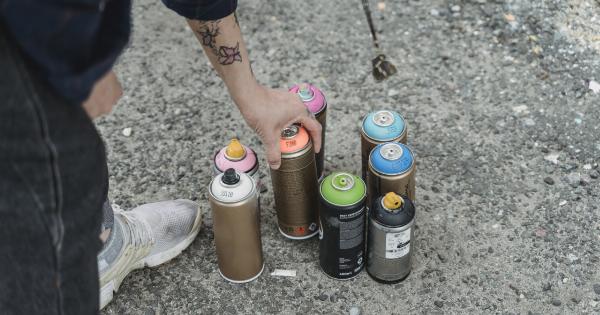Swimming pools are a source of fun, relaxation, and exercise for many people. However, incidents of accidents in swimming pools are not uncommon. One of the most hazardous scenarios that can happen when you are in a pool is getting trapped in it.
Trapping can occur due to various reasons and can be fatal if not addressed immediately. In this article, we will delve deep into the various things that can trap you in a pool and how you can prevent them from happening.
Drain Entrapment
One of the most common ways people can get trapped in a pool is through drain entrapment. Drain entrapment happens when an individual becomes immobilized by the suction power of the drain in the pool’s floor or wall.
The suction force created by the circulation and filtration system might hold the swimmer against the drain. If there is debris or hair stuck in the drain, then the suction force will be much higher, and it will be more challenging to escape.
The Consumer Product Safety Commission (CPSC) suggests that people should never play with or swim near drains. They recommend that pools should have drain covers with a secured frame that conforms with the ANSI/APSP-16 2011 standard.
Pools should also have multiple drains that can reduce the suction force. A pool’s circulation system must have anti-entrapment devices, including safety vacuum release systems, suction-limiting vent systems, and gravity drainage systems, which minimize the suction risk.
Swimmers should avoid loose-fitting clothing, long hair, jewellery, and body parts with open wounds that can get stuck in the drain.
Entrapment due to Pool Toys
Kids love to play with pool toys, but they can also be dangerous. In several cases, kids have been trapped in pool toys such as inner tubes, pool noodles, or a floating mattress.
These toys can flip over, creating a pocket of air that can trap kids inside, making it impossible to breathe. The child can get suffocated and drown.
Ensure that your pool toys have secure valves, proper inflation, and meet safety standards. Always supervise children playing with pool toys and discourage them from playing with the toys that can flip over or immerse them in water.
Entrapment due to Pool Covers
The pool cover can also become a cause of entrapment. An improperly installed pool cover can sag into the pool and trap people beneath it, leading to a suffocation hazard. Children love to walk on pool covers, and this can also be a dangerous activity.
If children are allowed to play around a pool that has a poorly installed pool cover, they could unknowingly step on it, slip in, and get trapped underneath.
Always ensure that the pool cover is properly installed and has a safety mechanism that automatically shuts off the pool cover when someone falls on it.
Children should not be allowed to walk on the pool cover as this can cause the cover to dip, and they can get trapped.
Hair Entrapment
Long hair can also cause entrapment in swimming pools. Longhaired people should always tie up their hair or wear a bathing cap; otherwise, their hair might get entangled in pool fittings such as the drain, ladder, or pool steps.
When hair gets trapped, suction forces can become intense, trapping the swimmer.
If someone’s hair is caught in a drain, turn off the pump as fast as possible to lower the suction force. Never try to pull the hair out as this might cause more injuries.
Instead, try to loosen the entangled hair with olive oil or shampoo, or use scissors to cut the hair that is wrapped around the drain.
Entrapment due to Body Parts
Entrapment due to body parts can be prevalent in children and inexperienced swimmers.
People who are not good swimmers might accidently get themselves into positions while inside the pool which they are unable to get out of on their own, resulting in entrapment.
It is essential to teach children how to swim and how to get themselves in and out of the pool. Everyone should also know their swimming limits and avoid doing anything that can make them stuck in the pool, such as playing hide and seek underwater.
Entanglement in pool equipment
Pool equipment such as pumps, filters and heaters have parts that move at high speeds. An entanglement could happen when swimmers accidentally get too close and their hair, jewellery or loose clothing gets caught in these moving parts.
All pool equipment should have safety covers or guards that protect potentially hazardous pieces from outside elements that can get caught in them, this will reduce the chance of an accident happening.
Entrapment by A Pool Cleaning System
Automatic pool cleaning devices are becoming increasingly popular. They move around the pool and vacuum up debris from the pool floor. There have been cases where swimmers have become trapped by these pool cleaning systems.
It is advisable never to swim while the pool cleaning system or the vacuums are in operation. Swimmers can get trapped in the inlets or hoses used by the cleaning system.
It is important to read and understand the manufacturer’s instructions before using the automatic pool cleaning system.
Entrapment due to Ladders
Pool ladders are essential for safely entering and exiting the pool. They are typically secured into the pool’s floor or onto the pool’s wall. However, children can easily get trapped in the rungs of a ladder while trying to climb up or down.
Always ensure that pool ladders are tightly installed, with no loose rungs or sharp edges.
Young children should always be closely monitored while swimming and when using the ladder, ensure that the ladder is sturdy, with no structural defects before it is used.
Conclusion
It is essential to consider all the risks associated with swimming and drowning in a pool. Trapping accidents can happen to anyone, anywhere, and at any time.
By taking appropriate precautions, we can reduce the risk of drowning and accidents in swimming pools.
To prevent entrapment accidents, always ensure that all pool safety rules and regulations are adhered to and make sure that a specified trained professional carries out pool installations and maintenance.
In addition to taking safety precautions, it is important to be trained in life-saving techniques such as cardio-pulmonary resuscitation (CPR), which can help save someone’s life before emergency services arrive.































